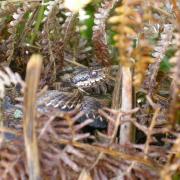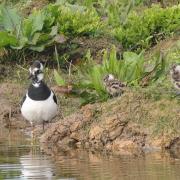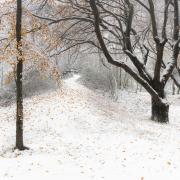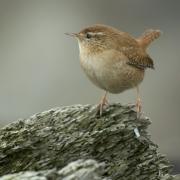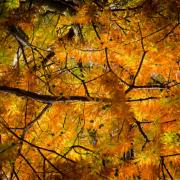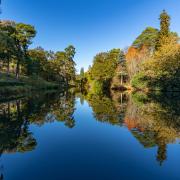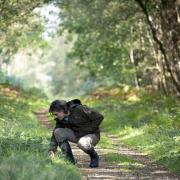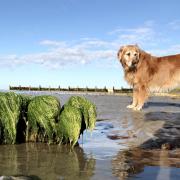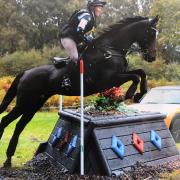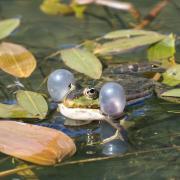Mike Russell of Sussex Wildlife Trust says it is essential for all life that we work in partnership with nature
It is one of those certainties in life that as you get older you like your daily routines, and I’m certainly no exception. Having got all the necessaries out the way, I like to get my breakfast, sit in the chair facing the garden and listen to The Today Programme on Radio 4.
On the hour, they have the major new stories, for example, British Gas profits down 6 per cent (now a mere £571m), riots in Kiev, Facebook buying a communication app for $19bn or David Bowie winning a Brit Award. The final item on a recent programme was just a sentence, saying that the diseases that have so badly affected honey bees are now being found in wild bumblebees, many species of which are already declining significantly. Studies show that the likely cause of this is due to honey bees and wild bumblebees foraging at the same nectar sources.
It is not unusual for wildlife or environmental items to be the “and also” finale to a news bulletin, reflecting the importance that the environment holds amongst those who make decisions about the news agenda.
The decline of our bumblebee population has now gone on for decades and recently one species, Cullem’s bumblebee, has become extinct in the UK. Bees and bumblebees are a critical link to one of our most important ‘ecosystem services’ as they pollinate plants essential for our food sources on this planet. And they do it all for free, so any decline or crashes in their population could have dire consequences right across the globe.
Environmental stories have actually had a bit more of an airing earlier this year due to the flooding that has hit southern England, but much of this has been of a derogatory nature. The Environment Agency has been particularly heavily criticised and there have been many derisory comments, particularly relating to the Somerset Levels, where they spent millions of pounds on creating a nature reserve when perhaps they should have been dredging the rivers. Arguments about whether to dredge or not to dredge will undoubtedly continue long after the floods have subsided and will be carried on by far more expert people than me.
In Sussex, the Environment Agency and RSPB are on the verge of completing the Medmerry Project, a scheme that significantly reduces the high flood risks to Selsey and the surrounding area, while also providing a wonderful new habitat for birds and wildlife. This has also compensated for loss of habitat in that area. Many birds such as lapwing and redshank have already taken advantage of this new habitat, despite the fact it is not yet fully open. This project is a good example of working with nature. Sea levels are rising and rather than spending money on continually shoring up the sea defences, they are allowing the sea to come in and flood old farmland, thereby directing water away from more vulnerable areas.
Since the Industrial Revolution, we as a species have fought against nature in our bid to develop our society, but there is now a strong school of thought that, in the long-term, this is having a detrimental effect on society, both economically and ecologically. Perhaps working with nature is the way forward so that both Homo sapiens and all wildlife can prosper.
Jess Price on the ladybird
Say “ladybird” and most people conjure up the image of a small red beetle covered in black spots. This is the typical image that appears in books, on children’s television and as a design for clothes, but in reality, ladybirds are much more diverse and interesting, with 46 species now found in Britain.
The orange ladybird (Halyzia 16-guttata) adult is a pale orange, although despite the Latin name, some individuals have between 12 to 15, rather than 16 white spots. This ladybird is only four to six millimetres long and has a distinctive translucent ‘skirt’ around the wing casings and pronotum - the bit between the head and the wing casing.
This attractive ladybird is happiest in woodlands; indeed, for many years it was considered to be a rare species found only in ancient woodland. However, it has become increasingly common over the past 20 years, as it has adapted to living on a variety of tree species, particularly sycamore and ash.
Adult orange ladybirds overwinter in leaf litter or in sheltered spaces in tree trunks. They usually emerge in April, but rarely breed before mid-June, which is later than most other ladybirds. This is most likely because the adults wait until the trees are in full foliage, as both the adult and larvae feed on the white powdery mildew found on broad-leave trees.
Orange ladybirds flourish in shady woodland locations, and as mildew thrives in moist weather, this is probably one of the few species that has benefited from the wet summers we have experienced in recent years. So next time you are out on a woodland walk, take a closer look at the leaves you pass. You might see an orange ladybird.
***
Sussex Wildlife Trust
Woods Mill, Henfield, West Sussex BN5 9SD, 01273 492630; www.sussexwildlifetrust.org.ukFor all your wildlife enquiries contact Jess on the WildCall hotline 01273 494777



